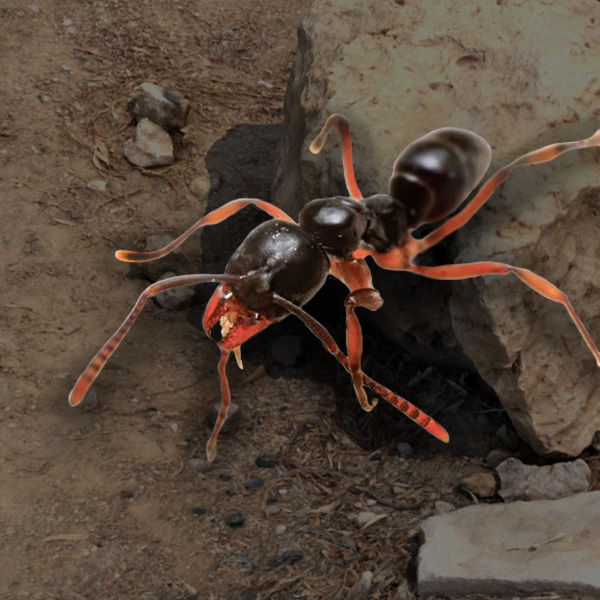The Asian Needle Ant
This ant species is medium-to-small-sized, measuring 5.0 to 6.5 mm (1/5″) in length. The Asian needle ant is much smaller than carpenter ants but twice as long as the odorous house ant. Its' long and slender body is dark brown to black with light brown to orange-ish colored legs and mandibles. Another distinguishing characteristic of this species is a raised venom sac located at the back of its body with an attached stinger.
This species prefers to nest in damp or moist areas such as, under leaf debris, beneath rocks, rotting logs, and loose soil. Human-made structures, such as pavement crevices and sprinkler systems, are also popular nesting areas. Their colony size varies from small to large, and they are polydomous, meaning a colony can consist of several nests. The Asian needle ant is also polygynous, which means nests contain several queens at one time. The colonies' Queens decrease during the summer months when the Alate (winged) ants-or termites are produced and active.

Living Spaces
Able to nest in both disturbed areas (Indoors) and natural areas (Outdoors).
Diet Choices
Termites, other ants, crane flies, crickets, cockroaches, beetles, grasshoppers, springtails, spiders, centipedes, earthworms, and other dead organisms. It also is attracted to any sugar sources
Fun Fact
The only ant with the inability to climb or cling to smooth surfaces, such as glass.
How Do We Remove Them?
Once you give McMahon Exterminating a call in Evansville, Indiana we will bring a trained technician out to discover the issue and infestation, identify and develop a unique solution to your problem as every home and infestation is unique as some might require different or more intensive methods depending on the severity and location.
We remove them by discovering where they are nesting to get rid of the nest, if there are multiple nests we will need to further analyze and close off spaces that the ants are entering to help deter them from entering the home.
It is important to remember when dealing with large infestations near the home that one simple treatment will most likely not solve the issue in a lot of cases, instead, we will need to assess and monitor the situation as it evolves because ants might find newer entry points or might be resilient depending on the type of ant we are dealing. With McMahon's C.A.N. initiative and our three easy steps — Canvas the area, Act on those results and Negate re-entry for the pest.


